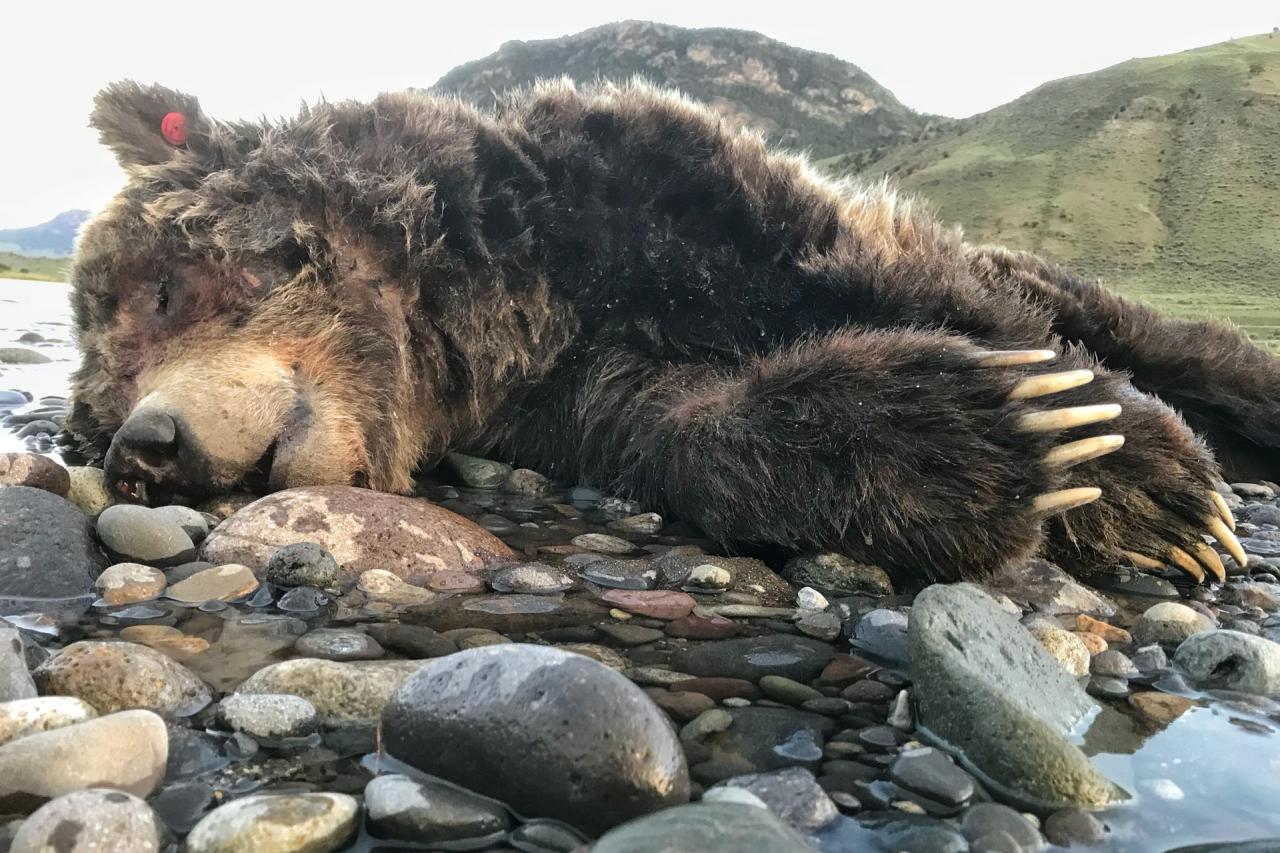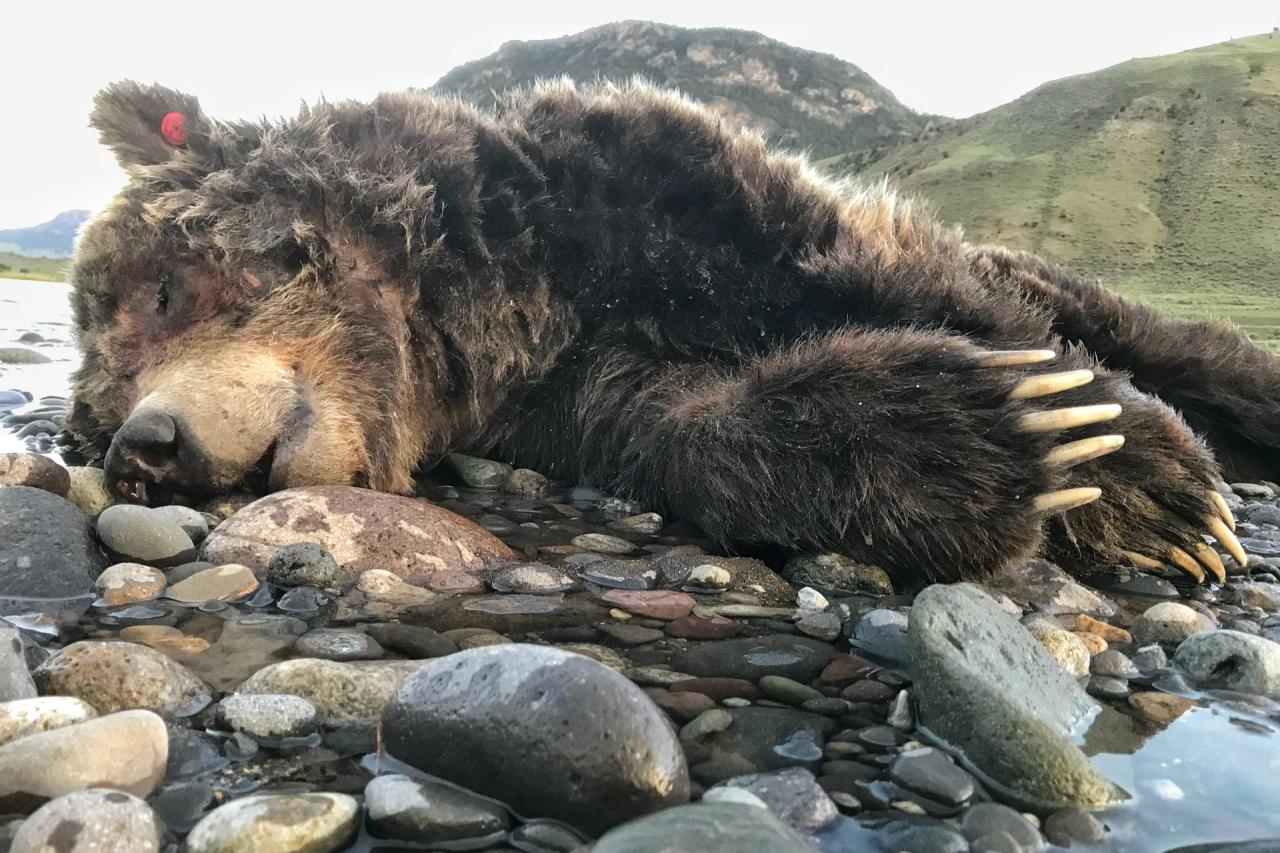Who died on the bear – In the realm of wildlife encounters, few creatures inspire both awe and trepidation like the bear. But behind the majestic facade lies a sobering truth: bear attacks can have tragic consequences. This article delves into the harrowing tales of those who lost their lives in encounters with these formidable predators, shedding light on the circumstances, locations, and species involved in these fatal events.
As we explore the victims of bear attacks, we’ll uncover the importance of prevention and safety measures, examining successful strategies and emphasizing the crucial role of bear awareness in mitigating the risk of encounters. Furthermore, we’ll delve into the intricate relationship between bear habitat and conservation, discussing the impact of habitat fragmentation, climate change, and hunting on bear populations.
Victims of Bear Attacks
Bear attacks, while uncommon, can be deadly encounters. Throughout history, there have been numerous individuals who have lost their lives to these powerful predators. This list provides a comprehensive overview of victims of bear attacks, including details such as the date, location, and species of bear involved.
It is important to note that this list is not exhaustive and may not include all victims of bear attacks. However, it serves as a somber reminder of the potential dangers associated with these animals and the importance of taking necessary precautions when in bear country.
Fatal Bear Attacks in North America
- Timothy Treadwell(October 5, 2003): Killed by a brown bear in Katmai National Park, Alaska.
- Amie Huguenard(October 5, 2003): Killed by a brown bear in Katmai National Park, Alaska.
- Horst Konig(July 29, 2010): Killed by a grizzly bear in Banff National Park, Canada.
- Valeria Lukyanova(August 29, 2013): Killed by a black bear in the Great Smoky Mountains National Park, Tennessee.
- P.J. DeRose(September 11, 2014): Killed by a black bear in New Jersey.
- Leah Lokan(October 10, 2015): Killed by a black bear in Alberta, Canada.
- Mark Uptain(July 10, 2016): Killed by a grizzly bear in Grand Teton National Park, Wyoming.
- David Salmoni(September 14, 2017): Killed by a brown bear in Katmai National Park, Alaska.
- Brian Matayoshi(September 28, 2018): Killed by a black bear in Yosemite National Park, California.
- John Wallace(May 5, 2019): Killed by a grizzly bear in Yellowstone National Park, Wyoming.
Bear Attack Prevention and Safety

Bear attacks are rare, but they can be deadly. Taking proper precautions can help you avoid an encounter with a bear and keep yourself safe.
Proper Food Storage
Bears are attracted to food, so it is important to store your food properly when you are in bear country. Never leave food unattended, and store it in bear-resistant containers or canisters. If you are camping, store your food in a bear-proof locker or hang it from a tree at least 10 feet off the ground and 4 feet away from the trunk.
Avoiding Encounters, Who died on the bear
The best way to avoid a bear attack is to avoid encounters with bears. Be aware of your surroundings and make noise when you are hiking or camping. This will help bears know you are there and give them time to move away.
- Make noise:Talk, sing, or clap your hands while hiking or camping. This will help bears know you are there and give them time to move away.
- Stay on trails:Bears are less likely to be in areas with a lot of human activity. Stay on designated trails when you are hiking or camping.
- Be aware of your surroundings:Pay attention to your surroundings and look for signs of bears, such as tracks, scat, or overturned rocks.
Carrying Bear Spray
Bear spray is an effective deterrent against bears. It is important to carry bear spray when you are in bear country and know how to use it. Bear spray should be carried on your body, not in your backpack. If you encounter a bear, deploy the bear spray immediately.
Aim for the bear’s face and spray in short, sharp bursts.
Bear Awareness and Education
Bear awareness and education are important for reducing the risk of bear attacks. By learning about bear behavior and taking proper precautions, you can help keep yourself safe.
- Learn about bear behavior:Learn about bear behavior and how to avoid encounters. This information can be found in books, online, or from a local wildlife agency.
- Educate others:Share your knowledge about bear safety with others. This will help reduce the risk of bear attacks for everyone.
Bear Habitat and Conservation
Preserving bear habitats is crucial for their survival and the overall health of ecosystems. Human-bear conflicts often arise due to habitat loss and fragmentation, leading to bears seeking food and shelter in human-occupied areas.
Habitat Fragmentation
Human activities like urbanization, agriculture, and mining fragment bear habitats, creating isolated populations and reducing their genetic diversity. Fragmented habitats make it difficult for bears to find food, mates, and suitable denning sites.
Climate Change
Climate change is altering bear habitats by shifting vegetation patterns, reducing food availability, and affecting hibernation cycles. As temperatures rise, bears may be forced to move to higher elevations or different regions, potentially leading to conflicts with other bear populations.
Hunting
Hunting can significantly impact bear populations, especially if not managed sustainably. Overhunting can lead to population declines, reduced genetic diversity, and increased vulnerability to environmental stressors.
Sustainable Practices and Conservation Efforts
To protect bears and their habitats, sustainable practices and conservation efforts are essential:
- Protect and expand bear habitats by establishing protected areas, wildlife corridors, and reducing habitat fragmentation.
- Manage hunting practices to ensure sustainability, considering population dynamics, habitat conditions, and genetic diversity.
- Implement measures to mitigate human-bear conflicts, such as proper waste management, bear-proof containers, and electric fencing.
- Conduct research to understand bear population dynamics, habitat use, and the impacts of human activities.
li>Educate the public about bear safety and responsible behavior in bear country.
Final Wrap-Up
The stories of those who died on the bear serve as a poignant reminder of the potential dangers that lurk within the wilderness. Yet, through understanding the circumstances surrounding these tragic events, we can gain invaluable insights into how to prevent future encounters and protect both humans and bears alike.
By fostering a deeper appreciation for these magnificent creatures and their habitats, we can coexist harmoniously with these apex predators, ensuring the safety of both our communities and the delicate balance of nature.
Q&A: Who Died On The Bear
Who are the most common victims of bear attacks?
Hikers, campers, and hunters are among the most frequent victims of bear attacks, as they often venture into bear habitats.
What are the most dangerous bear species?
Grizzly bears, polar bears, and black bears are responsible for the majority of fatal bear attacks.
What are the most effective ways to prevent bear attacks?
Proper food storage, avoiding encounters, and carrying bear spray are crucial measures to prevent bear attacks.

